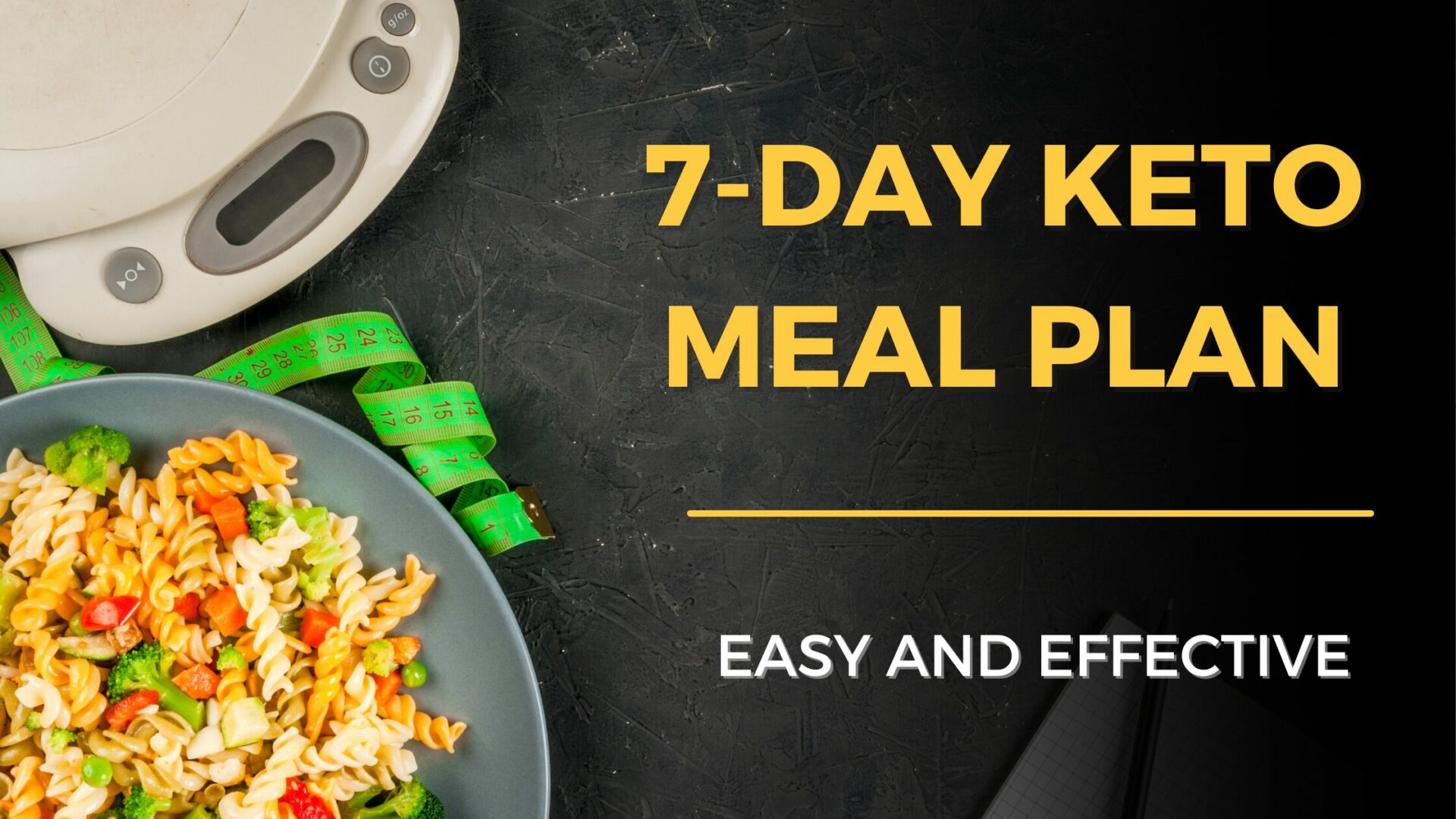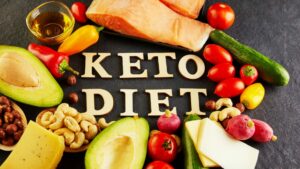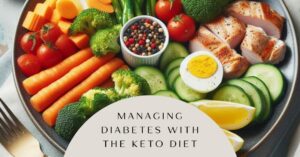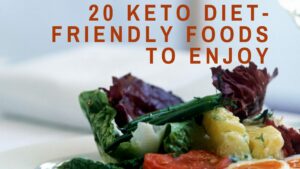A Keto Meal Plan involves a high fat and low carb diet. Reducing carbs may induce ketosis, prompting the body to use fat for energy, potentially aiding weight loss.
If you find yourself in a conversation about dieting or weight loss, chances are you’ll hear about the ketogenic, or keto, diet. The keto diet has become one of the most popular methods worldwide among people trying to lose weight and improve their health.
If you’ve been thinking about trying the keto diet and have gotten the thumbs up from your healthcare professional, use this article to learn more about what to eat and what to limit while following a Keto Meal Plan.
Table of Contents
Foundational Principles of the Keto Diet
The Keto Diet typically features low carb, high fat, and moderate protein intake. While carb consumption is permitted, it requires careful monitoring.
Various versions of the keto diet involve consuming approximate percentages of calories as follows:
Carbs: 5–10% Fats: 70–75% Protein: 15–20%
This carb restriction compels the body to prioritize fats as its primary energy source, a state known as ketosis.
During ketosis, the liver produces ketones from fats when glucose is limited, serving as an alternative fuel source. Moreover, keto diets can reduce hunger and enhance satiety, aiding weight loss efforts.
Research indicates that ketogenic diets effectively promote weight loss, though they may not offer significantly greater benefits compared to other weight-loss diets.
Keto meal plan Diet
Transitioning to a ketogenic diet might feel daunting, but it doesn’t need to be complicated. The key is to prioritize reducing carbs while increasing the fat and protein content of your meals and snacks. Utilizing online tools and calculators can offer valuable assistance.
To attain and sustain ketosis, it’s essential to limit carb intake. While some individuals may achieve ketosis by consuming only 20 grams of carbs daily, others may find success with a slightly higher carb intake.
In general, the lower your carbohydrate consumption, the more manageable it becomes to enter and maintain ketosis.
That’s why adhering to keto-friendly foods and steering clear of carb-rich items is the most effective approach to achieve weight loss success on a ketogenic diet.
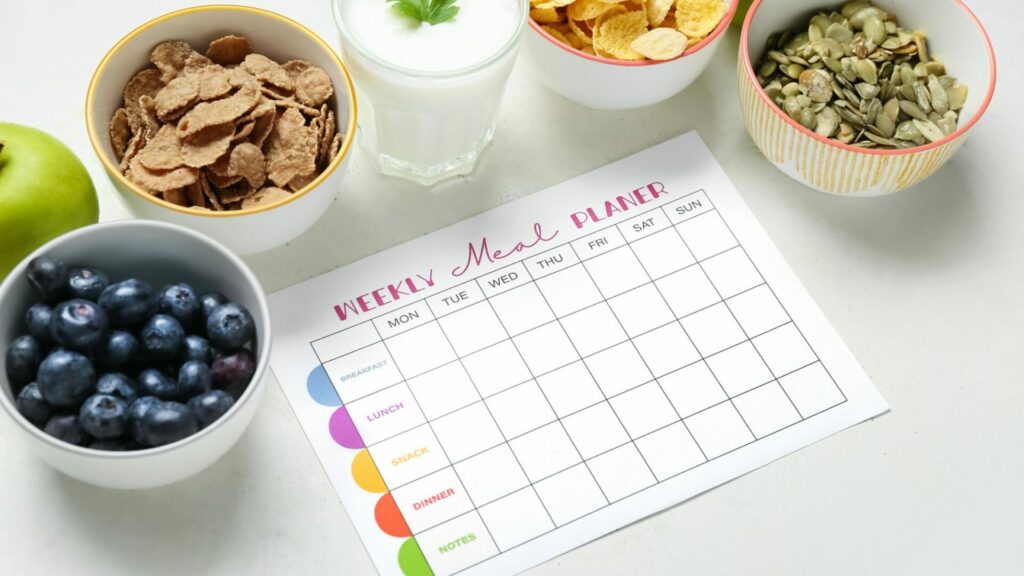
Foods Compatible with the Keto Diet
When adhering to a ketogenic diet, meals and snacks should revolve around the following food choices:
- Poultry: Chicken and turkey are excellent options.
- Fatty fish: Include herring, salmon, and mackerel in your diet.
- Eggs: Pastured, organic, or conventional varieties are all suitable.
- Meat: Opt for beef, venison, pork, organ meats, and bison.
- Full-fat cheese: Enjoy varieties like cheddar, mozzarella, brie, goat cheese, and cream cheese.
- Full-fat dairy: Choose unsweetened yogurt, butter, and cream, but be mindful of carb content by checking labels.
- Non-starchy vegetables: Include greens, broccoli, tomatoes, mushrooms, and peppers in your meals.
- Nuts and seeds: Incorporate macadamia nuts, almonds, walnuts, pumpkin seeds, peanuts, and flaxseeds.
- Nut butter: Select no-sugar-added peanut, almond, and cashew butters.
- Avocados: Add whole avocados to almost any meal or snack.
- Oils rich in healthy fats: Use olive oil, avocado oil, and sesame oil for cooking and dressing.
- Condiments: Enhance flavor with salt, pepper, vinegar, lemon juice, fresh herbs, and spices.
Foods to Restrict on a Keto Diet
Whenever feasible, it’s advisable to steer clear or moderate consumption of carb-rich foods while adhering to a ketogenic diet.
The following foods should be restricted to a minimum:
- Bread and baked goods: Avoid white bread, whole wheat bread, crackers, cookies, doughnuts, and rolls.
- Beans and legumes: Minimize intake of black beans, chickpeas, lentils, and kidney beans.
- Sweets and sugary foods: Limit consumption of sugar, ice cream, candy, maple syrup, honey, agave syrup, and coconut sugar.
- Sweetened beverages: Reduce intake of soda, juice, sweetened teas, and sports drinks.
- Grains and grain products: Restrict consumption of wheat, rice, oats, breakfast cereals, and tortillas.
- Pasta: Cut back on spaghetti and other noodle dishes.
- Starchy vegetables: Limit potatoes, sweet potatoes, butternut squash, corn, peas, and pumpkin.
- High carb sauces: Avoid barbecue sauce, ketchup, honey mustard, sugary salad dressings, and dipping sauces.
- Fruit: Moderate consumption of citrus fruits, grapes, bananas, and pineapple.
- Certain alcoholic beverages: Reduce consumption of beer and sugary mixed drinks.
While it’s important to limit carbs, you can still include them in your diet in moderation while keeping track of your intake.
For example, you can indulge in low-glycemic fruits like berries in moderation, as long as you’re adhering to a keto-friendly balance of macronutrients (carbs, protein, fat).
Ensure to prioritize whole foods and avoid processed foods and trans fats whenever feasible.
Keto-Compatible Drinks
Sugar is present in a diverse range of beverages, such as juice, soda, iced tea, and coffee drinks. When following a ketogenic diet, it’s essential to restrict or avoid high carb drinks, just as you would with high carb foods.
Sugary drinks have also been associated with a range of health issues, including obesity and an elevated risk of type 2 diabetes.
There are numerous delicious sugar-free options available for individuals following the keto diet. Keto-friendly beverage selections include:
- Water: Opt for water as your primary source of hydration and drink it consistently throughout the day.
- Sparkling water: Enjoy sparkling water as a refreshing alternative to soda.
- Unsweetened coffee: Enhance your coffee with heavy cream for added flavor without extra carbs.
- Unsweetened green tea: Indulge in the delicious taste of green tea, which offers numerous health benefits.
To enhance the flavor of your water, consider exploring various keto-friendly combinations. For instance, adding fresh mint and a lemon peel to your water bottle can effortlessly elevate hydration.
While alcohol consumption should be limited, indulging in an occasional low-carb drink such as vodka or tequila mixed with soda water is permissible on the keto diet.
A Sample Keto Meal Plan for One Week
The following meal plan contains less than 50 grams of total carbs per day. As noted earlier, some individuals may need to further reduce their carbohydrate intake to achieve ketosis.
Here is a basic 1-week ketogenic meal plan that can be customized according to individual dietary requirements.
Monday’s Meal Plan:
- Breakfast: baked avocado egg boats
- Lunch: Caesar salad with chicken
- Dinner: pork chops with vegetables
Tuesday’s Meal Plan:
- Breakfast: cauliflower toast topped with cheese and avocado
- Lunch: bunless salmon burgers topped with pesto
- Dinner: meatballs served with zucchini noodles and Parmesan cheese
Wednesday Meal Plan:
- Breakfast: full-fat yogurt topped with Keto granola
- Lunch: steak bowl with cauliflower rice, cheese, herbs, avocado, and salsa
- Dinner: bison steak with cheesy broccoli
Thursday Meal Plan:
- Breakfast: bell pepper stuffed with cheese and eggs
- Lunch: arugula salad with hard-boiled eggs, turkey, avocado, and blue cheese
- Dinner: grilled salmon with spinach sauteed in sesame oil
Friday Meal Plan:
- Breakfast: Enjoy two eggs fried in butter alongside sautéed greens.
- Lunch: Indulge in a bunless burger topped with cheese, mushrooms, and avocado over a bed of greens.
- Dinner: Savor pork chops paired with green beans sautéed in olive oil.
Saturday Meal Plan:
- Breakfast: Mushroom omelet
- Lunch: Tuna salad with celery and tomato on a bed of greens
- Dinner: Roast chicken with cream sauce and sautéed broccoli
Sunday Meal Plan:
- Breakfast: coconut milk chia pudding topped with coconut and walnuts
- Lunch: Cobb salad made with greens, hard-boiled eggs, avocado, cheese, and turkey
- Dinner: coconut chicken curry
As evident, ketogenic meals offer a wide range of flavors and variety.
While numerous ketogenic meals revolve around animal products, there are vegetarian alternatives available. Nonetheless, adhering to a keto vegetarian diet presents greater challenges due to the limited variety of food choices available.
Those on a keto diet should strive for a diverse array of ingredients to minimize the likelihood of nutritional gaps.
If you’re adopting a less restrictive ketogenic diet, incorporating a cup of berries into your breakfast or a small portion of a starchy vegetable into your dinner will raise the carb count in this meal plan.
Snack Choices for a Keto Diet
Incorporating snacks between meals can aid in managing hunger and staying aligned with your ketogenic diet goals.
Below are some fantastic, keto-friendly snack choices:
- Cheese roll-ups
- Avocado cocoa mousse
- Guacamole with low carb veggies
- Kale chips
- Jerky
- Hard-boiled eggs
- Coconut chips
- Almonds and cheddar cheese
- Celery and peppers with herbed cream cheese dip
- Berries with heavy whipping cream
- Macadamia nuts
- Parmesan crisps
- Half an avocado stuffed with chicken salad
- Greens with high fat dressing and avocado
- Olives and sliced salami
- Trail mix made with unsweetened coconut, nuts, and seeds
- Keto smoothie made with coconut milk, cocoa, and avocado
Regardless of the diet you’re on, it’s crucial to consume the right number of calories tailored to your activity level, weight loss objectives, age, and gender. Collaborating with a nutritionist can ensure you receive the necessary nutrients and calories aligned with your individual goals or health background.
A Basic Keto Grocery List
A balanced ketogenic diet should incorporate ample fresh produce, healthy fats, and proteins.
Opting for a blend of fresh and frozen produce guarantees a steady stock of keto-friendly vegetables and fruits to incorporate into your recipes.
Here is a basic shopping list for a ketogenic diet to assist you during your grocery shopping:
- Eggs: organic or conventional
- Nuts: macadamia nuts, almonds, pecans, and pistachios
- Avocados: a mixture of ripe and unripe avocados (so that your supply will last)
- Meat and poultry: beef, chicken, turkey, and pork
- Fish: fatty fish like salmon, sardines, mackerel, canned tuna, and herring
- Full-fat dairy: unsweetened yogurt, butter, heavy cream, and sour cream
- Fresh or frozen low carb vegetables: mushrooms, cauliflower, broccoli, greens, peppers, onions, and tomatoes
- Cheese: Brie, cream cheese, cheddar, and goat cheese
- Seeds: pumpkin seeds, sunflower seeds, and chia seeds
- Nut butters: almond butter, sunflower butter, and peanut butter
- Oils: olive, sesame, and avocado oils
- Condiments: sea salt, pepper, salsa, herbs, garlic, vinegar, mustard, olives, and spices
- Shellfish: oysters, shrimp, and scallops
- Frozen or fresh berries: blueberries, raspberries, and blackberries
Taking the time to plan your meals in advance and stocking up on the necessary ingredients for several days’ worth of nutritious meals is always a valuable investment.
Additionally, adhering to a shopping list can assist you in steering clear of foods that do not align with your nutritional goals.
Advantages of the Keto Diet
According to some research studies, embracing a low carb, high fat diet like the keto diet may contribute to weight loss and enhance glycemic control in individuals with type 2 diabetes.
The keto diet might also offer neuroprotective benefits and potentially enhance cognitive function in individuals with Alzheimer’s disease, although further research is required.
Drawbacks and Risks of the Keto Diet
Although the keto diet offers potential benefits, it may not be sustainable over the long term. Individuals on the keto diet should be aware of certain risks and potential drawbacks.
Keto Flu: This refers to a set of symptoms that may arise when initiating a ketogenic diet. It can resemble the flu and arises due to the body adjusting to a diet low in carbohydrates. As your body enters ketosis, you may experience symptoms such as leg cramps, digestive problems, and bad breath. While ketosis is generally safe and beneficial, it may not be suitable for everyone.
Weight Rebound: Ceasing the diet may result in weight regain, despite its initial effectiveness in promoting weight loss.
Not Suitable for Everyone: The keto diet may not be advisable for everyone. This includes individuals with kidney failure or liver disease, as well as those with type 1 diabetes, as it could potentially lead to diabetes-related ketoacidosis. It’s essential to consult with your healthcare team before embarking on the keto diet.
Cholesterol Concerns: The keto diet often contains high levels of saturated fat and trans fats. These fats have the potential to elevate LDL (“bad”) cholesterol levels in certain individuals, thereby potentially heightening the risk of cardiovascular disease and related events such as heart attack and stroke.
Fiber and Vitamins: A ketogenic diet may also lack sufficient amounts of vegetables, grains, and legumes, resulting in potential deficiencies in fiber and B vitamins crucial for maintaining essential bodily functions.
Challenges of Restriction: The diet’s strict limitations require meticulous planning, making it challenging to maintain. Limited food options may result in nutritional gaps and feelings of monotony. Additionally, adhering to the diet can pose difficulties in social settings, as dining out becomes more complex.
Pregnancy and Nursing Mothers: It may not be advisable for individuals who are pregnant or breastfeeding.
For these reasons, it’s advisable to consult with a healthcare professional before embarking on a keto diet.
Frequently asked questions
What to Consume on a Keto Diet?
In accordance with your specific keto diet plan, carbohydrates typically constitute 5–10% of your daily intake, while fats make up 70–75%, and protein accounts for 15–20%. Some examples of suitable foods include a mushroom omelette, chicken curry, yogurt, nuts, and seeds. For optimal results, aim to obtain your carbohydrates from fruits or low-carb vegetables.
What are the fundamental principles of the keto diet?
Individuals adhering to a keto diet prioritize consuming high-quality fats and proteins, while limiting carbohydrate intake to approximately 5–10% of their total calories. To reap the rewards of this dietary approach, it’s essential to choose less processed foods, such as nuts and fresh fish.
What are the Primary Foods to Steer Clear of on a Keto Diet?
Foods to steer clear of encompass carbohydrates, with a focus on highly processed carbs like white bread, cookies, and similar items.
Conclusions
Ketogenic diets typically consist of approximately 70–75% fat, 15–20% protein, and 5–10% carbohydrates per day.
Emphasize high-fat, low-carb options such as eggs, meats, dairy, and non-starchy vegetables, along with sugar-free drinks. Remember to restrict heavily processed foods and trans fats.
The rise in popularity of the ketogenic diet has made it simpler than ever to discover a diverse range of engaging and nutritious keto meal inspirations on the internet.
Since the keto diet may not be suitable for individuals with high cholesterol or those managing heart or liver conditions, it’s crucial to seek guidance from a registered dietitian, physician, or another qualified healthcare provider before embarking on the keto diet to ascertain its safety for your specific situation.


